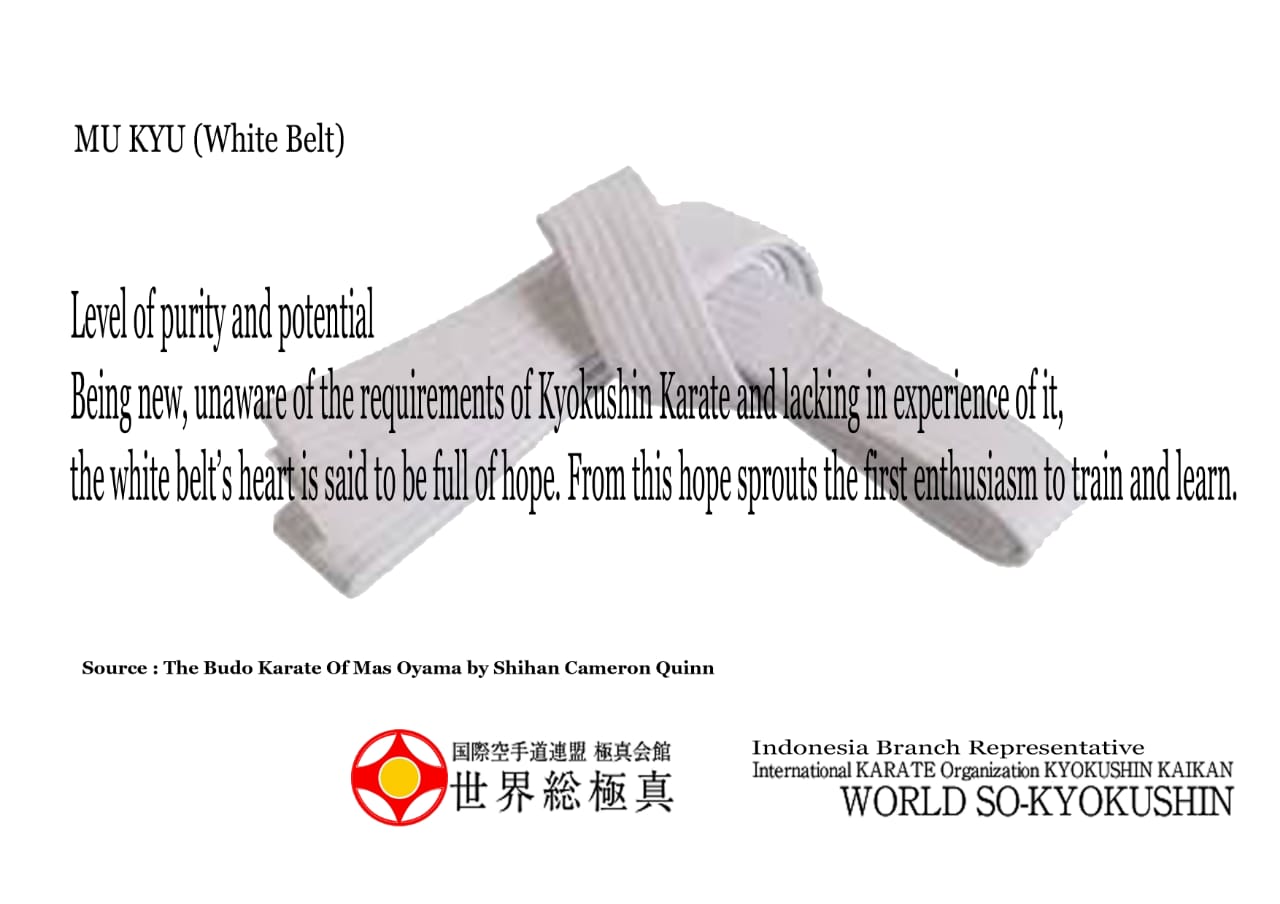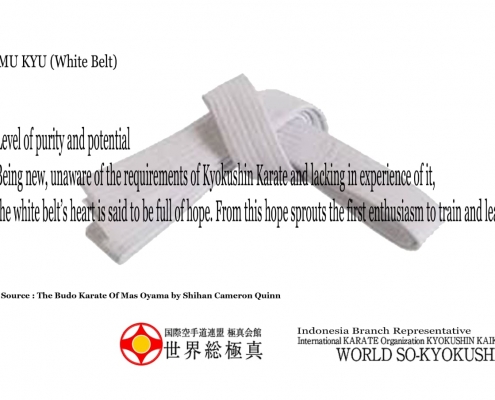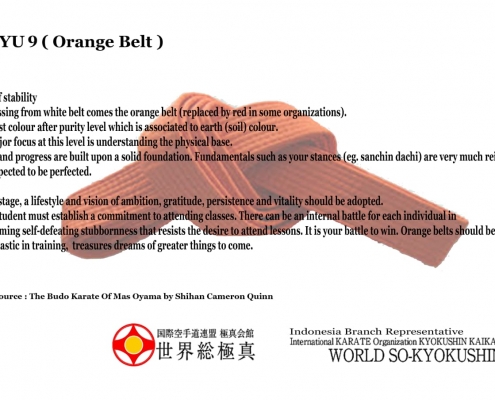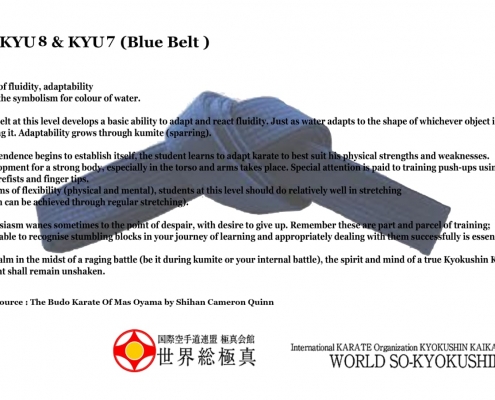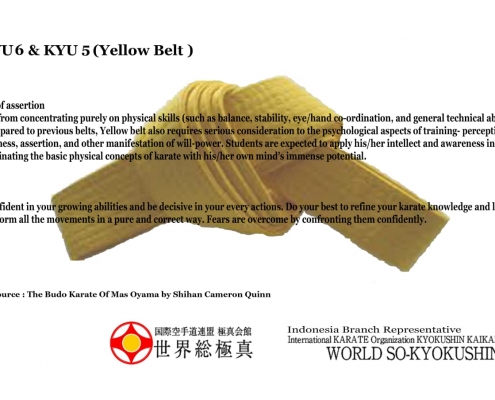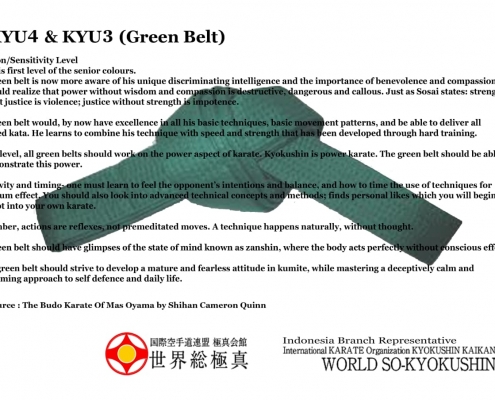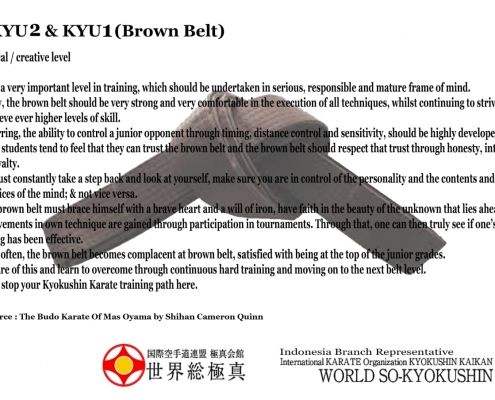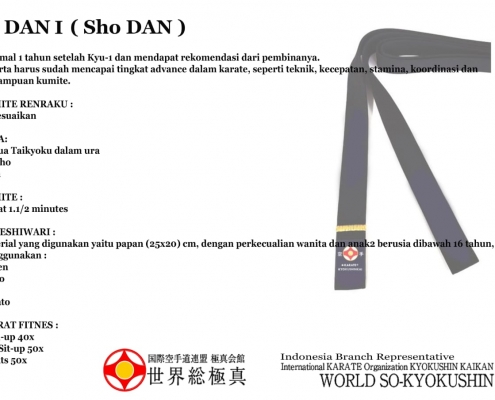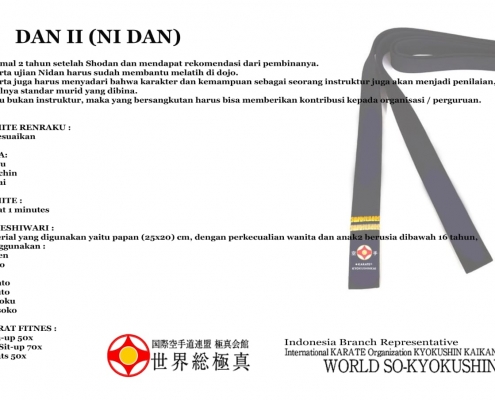KURIKULUM
Belts In Kyokushin Karate
The belt system in Kyokushin was introduced by it’s founder, Masutatsu ‘Mas’ Oyama, who was a former student of Shotokan, under Gichin Funakoshi, in which he obtained the rank of 4th dan black. Not to mention also having the ranks of 7th Dan Black Belt in Gōjū-ryū Karate and 4th Dan Black Belt in Judo.
The belt system is divided into 10 Kyu grades (beginner grades) and Dan grades (advanced grades) up to 10. Each colored belt has two levels, the second being represented by a stripe at the end of the belt. The white (Mukyu) belt however, does not represent any level and of the white belt literally means no grade. As such, the white belt is used by practitioners who are not yet graded. The belt system under Mas Oyama followed this order since the 1960s with the exception of the red belt, which was incorporated only in the last year of his life, replacing the earlier used white belt with one and two red stripes for the same kyu grades.
While some groups also use red belts for high dan grades, Sosai Mas Oyama did not follow this practice in his dojo or organization, always wearing a wholly black belt for himself.
The belt path in Kyokushin is not a short one. One would expect to train twice to three times a week for at least 5 years before achieving the rank of 1st Dan, or Black Belt. 1st Dan is considered the beginning, with Dan grades going up to 10th Dan, with the 10th usually reserved for the founder of the system, or the head of an organization. Comparing the ranks to the Western schooling system, think of the colored belts = grade school, 1st Dan through 4th Dan = undergrad, 5thDan = Masters, and anything above = a phd.
Perhaps the most widely read and respected interpretation of the fundamental psychological requirements of each level of belt is found in the book, The Budo Karate of Mas Oyama, written by former student and interpreter to Sosai Masutatsu Oyama, Cameron Quinn.

